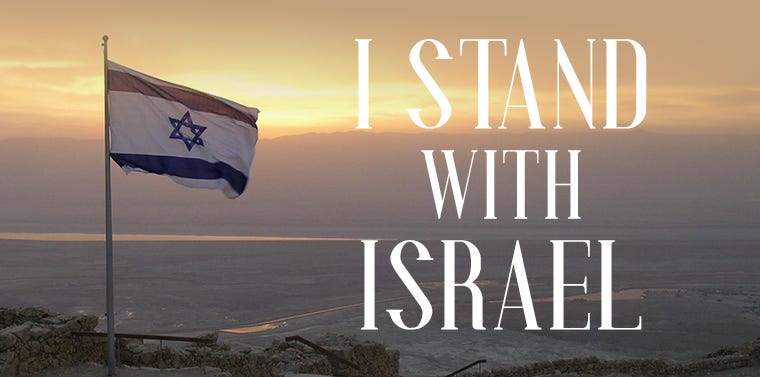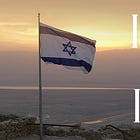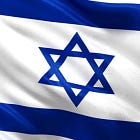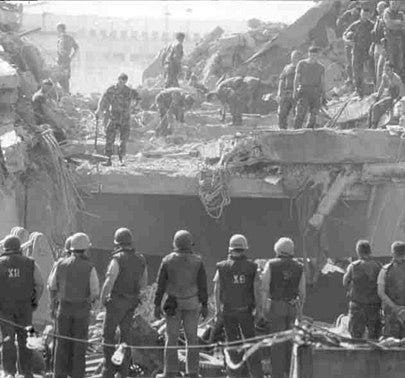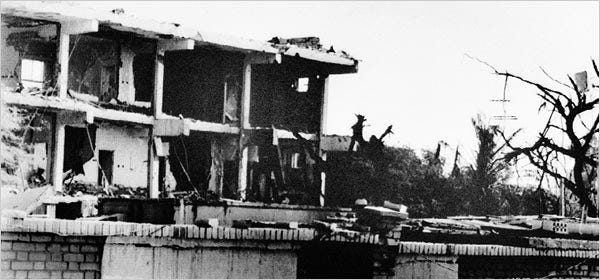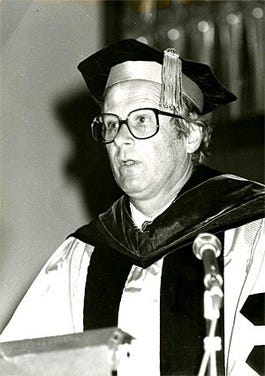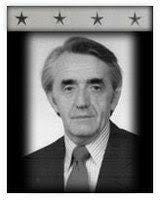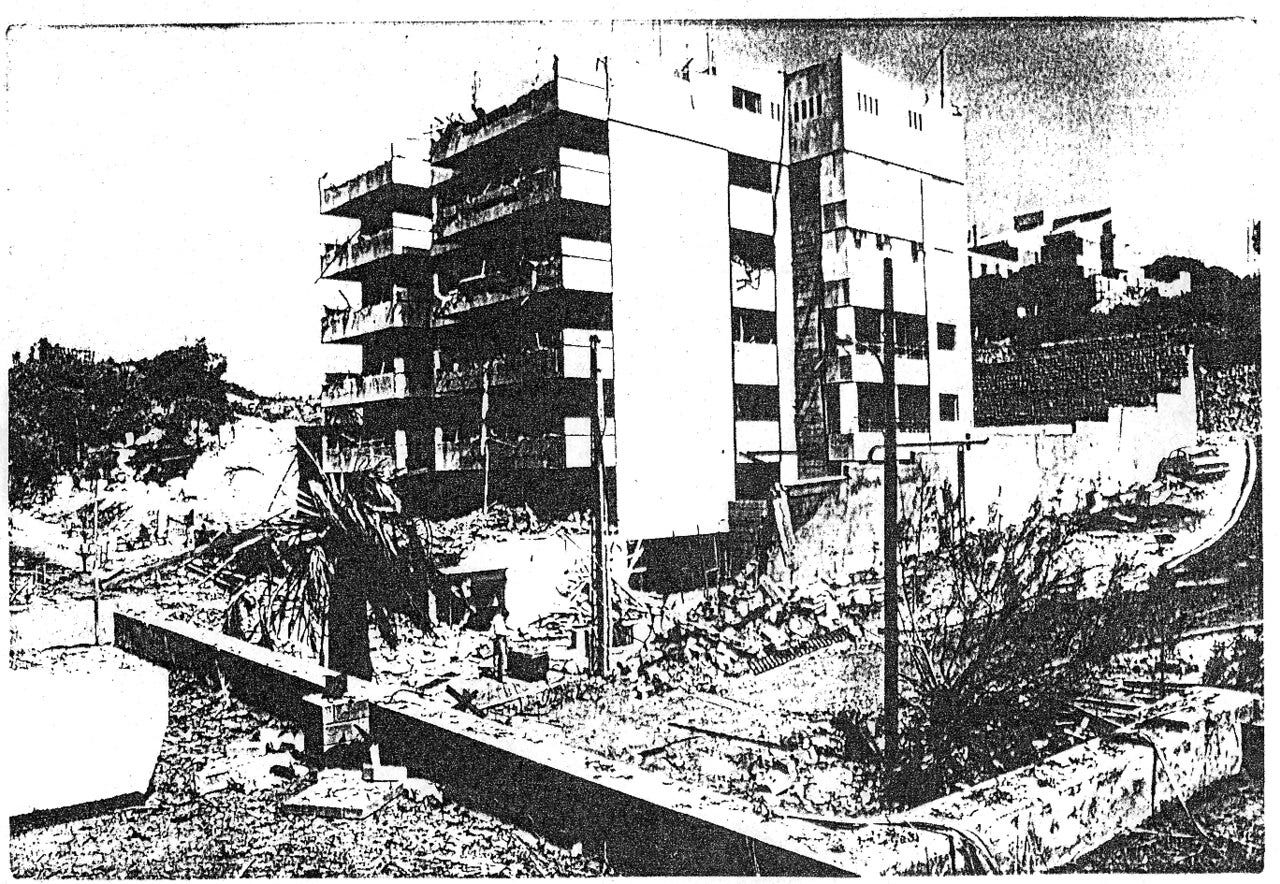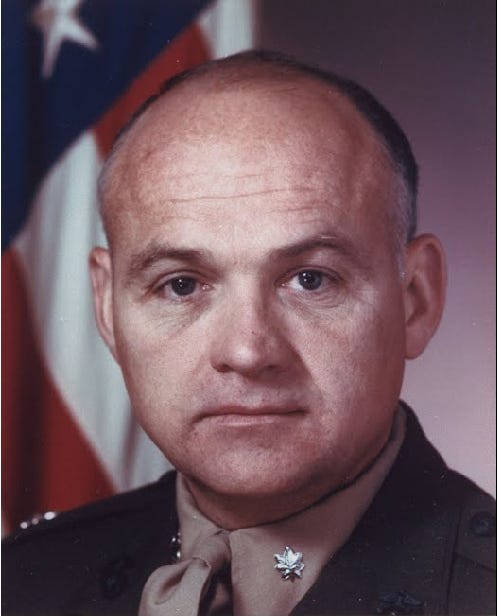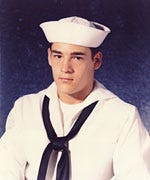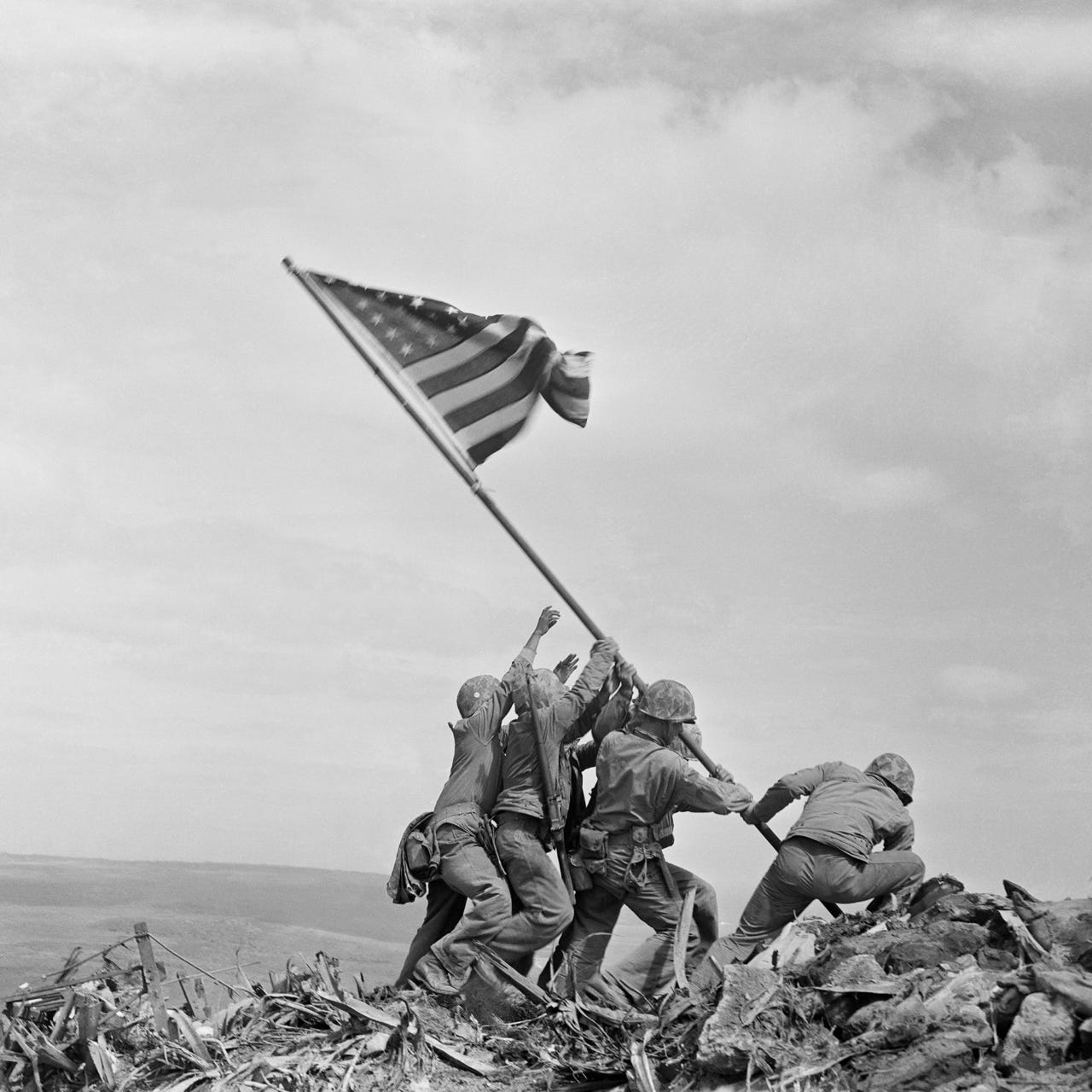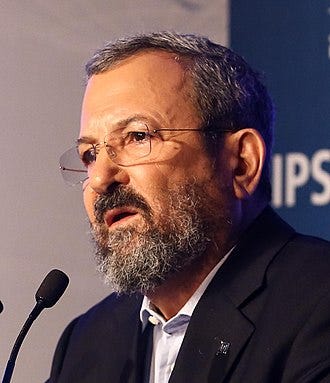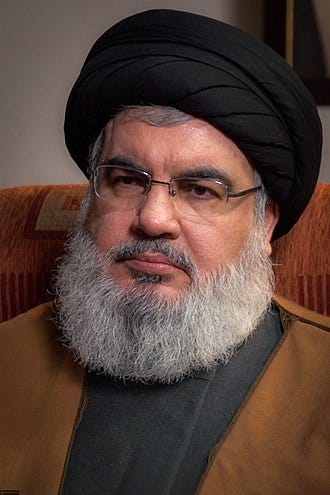Israel Versus Hezbollah Part I
How did we get here and what is the chance for a wider Middle Eastern war.
The Israeli war against Hamas in Gaza seems to be winding down, and at the same time the northern portions of Israel have been made uninhabitable by the constant and massive rocket fire coming from Hezbollah positions in southern Lebanon. This sets up a confrontation between Israel and Hezbollah, a much bigger, better armed and organized force than Hamas. It also threatens to draw Iran into a direct confrontation with Israel, which could also draw the United States into another Middle East war. It is also uncertain what, if any, help the Biden administration would give to Israel in a war with Hezbollah. They have demonstrated over the last eight months that they are no real friend of Israel as I illustrated in my last post. Click the link below to read it.
What would a conflict between Israel and Hezbollah look like and how would it affect the rest of the region? First as always, a history of Hezbollah and their interactions with the US and Israel.
What is Hezbollah?
As you may or may not remember from a post I made in May of 2023 (click below to read it), Lebanon is the only country in the Middle East that has a large Christian community and they came up with an interesting solution for their government.
Under a 1943 agreement, political power is divided among Lebanon’s predominant religious groups. A Sunni Muslim serves as prime minister, a Maronite Christian as president, and a Shiite Muslim as the speaker of Parliament. Tensions between these groups evolved into civil war in 1975 as several factors upset the delicate balance. The Sunni population had grown with the arrival of the PLO after they had been ejected from Jordan. At the same time Shiites felt increasingly marginalized by the ruling Christian minority. Amid the fighting, Israeli forces invaded southern Lebanon in 1978 and again in 1982 to expel PLO fighters that used the region as their base to attack Israel. Hezbollah emerged during that turbulent time in Lebanon.

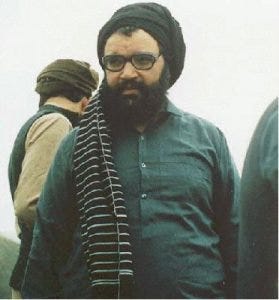
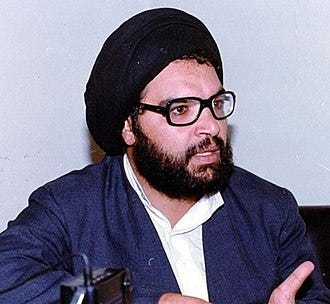

Ali Akbar Mohtashamipur, Subhi al-Tufayli, Abbas al-Musawi and Hassan Nasrallah influenced by the theocratic government in Iran, which came to power in 1979 and is the region’s only Shiite government, took up arms against the Israeli occupation. Seeing an opportunity to expand its influence in Arab states, Iran and its Islamic Revolutionary Guard Corps (IRGC), provided funds and training to the budding militia, which adopted the name Hezbollah, meaning “The Party of God.”
Hezbollah bills itself as a Shiite resistance movement, and it enshrined its ideology in a 1985 manifesto that vowed to expel Western powers from Lebanon, called for the destruction of Israel, and pledged allegiance to Iran’s supreme leader. It also advocated an Iran-inspired Islamist regime, but emphasized that the Lebanese people should have the freedom of self-determination.
It earned a reputation for extreme militancy, battling the Amal militia for control of Shia areas. However, unlike other militias in Lebanon at the time, it never engaged in sectarian violence (or fought a major engagement with the regular Lebanese Army) during the war. It was against Western targets that Hezbollah really earned their reputation. Hezbollah was the first Islamic terrorist groups to use suicide bombings in the Middle East. Their truck bombings in Tyre against a IDF headquarters in 1982 and 1983, that killed 103 Israelis and 59 Lebanese and wounded another 98 people, inspired other militant extremist groups to adopt the tactic for their own purposes. Although Hezbollah avoided direct confrontation with the Lebanese Army, it lashed out with fury at the MNF and any Western targets they could find. Here is just a sample of their work.
On July 19, 1982, David S. Dodge, President of the American University of Beirut, was abducted from campus by Hezbollah operatives. After a short captivity in Lebanon, he was flown to a prison near Tehran. He was released exactly one year later after high level diplomatic efforts, including an appeal by Syrian president Hafez al-Assad to secure Mr. Dodge’s release.
On April 18, 1983, a van packed with a ton of explosives and driven by a Hezbollah operative smashed through perimeter fences, crashed into the main lobby of the United States Embassy in Beirut and exploded. The blast collapsed the entire central facade of the horseshoe-shaped building, leaving the wreckage of balconies and offices in heaped tiers of rubble, and sending masonry, metal and glass fragments over a wide area. The explosion was heard throughout West Beirut and broke windows as far as a mile away.
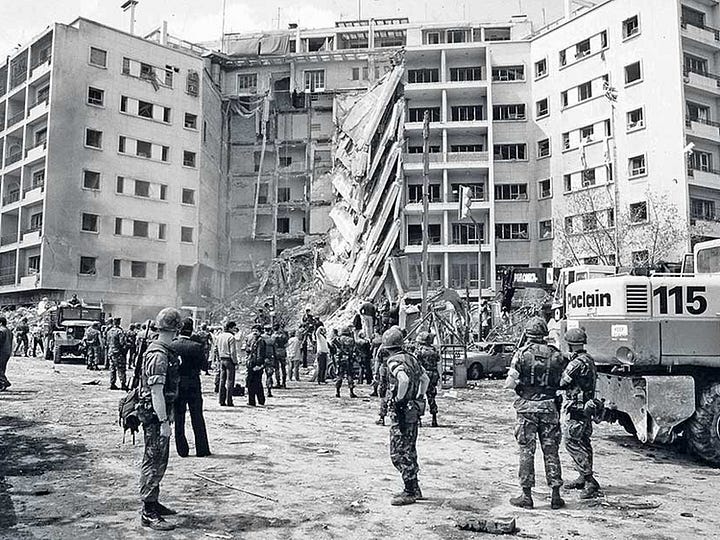
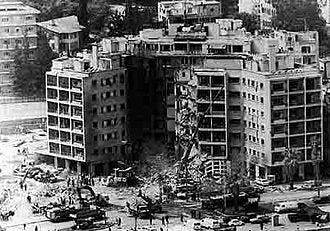
63 people were killed in the bombing: 32 Lebanese employees, 17 Americans, and 14 visitors and passers-by. The Americans killed included the CIA's top Middle East analyst and Near East director, Robert Ames, Station Chief Kenneth Haas, and most of the Beirut staff of the CIA.
On October 23, 1983, at 6:22 am, a 19-ton Mercedes-Benz stake-bed truck drove to the Beirut International Airport. The driver, an Iranian national named Ismail Ascari, turned his truck onto an access road leading to the compound serving as the barracks for the 1st Battalion 8th Marines (part of the MNF). He drove into the parking lot, crashed through a five feet high barrier of concertina wire separating the parking lot from the building, passed between two sentry posts and through an open vehicle gate in the perimeter chain-link fence, crashed through the guard shack in front of the building and smashed into the lobby. Ascari detonated his explosive device consisting of canisters of compressed butane in paired with pentaerythritol tetranitrate (PETN) to create a fuel-air explosive, estimated to be equivalent to 12,000 pounds of TNT. The bomb was carried on a layer of concrete covered with a slab of marble to direct the blast upward. The force of the explosion initially lifted the entire four-story structure into the air, shearing the bases of the concrete support columns, each measuring fifteen feet in circumference and reinforced by numerous 1-3/4 inch rebar, the building then fell in upon itself.
220 Marines, 18 Naval personnel and three Army personnel were killed in the blast and another 115 were wounded. This incident was the deadliest single-day death toll for the United States Marine Corps since the Battle of Iwo Jima during World War II and the deadliest single-day death toll for the US military since the first day of the Tet Offensive during the Vietnam War.
Minutes later and a few miles away, a second suicide bomber struck the nine-story building where the French MNF contingent was stationed. 58 paratroopers from the 1st and 9th Parachute Regiments were killed and 15 wounded. It was the single worst French military loss since the end of the Algerian War in 1962. The wife and four children of a Lebanese janitor at the building were also killed, and more than twenty other Lebanese civilians were injured.
On December 12, 1983, a truck laden with 45 large cylinders of gas connected to plastic explosives broke through the front gates of the American Embassy in Kuwait City, ramming into the embassy's three-story administrative annex, demolishing half the structure.
The shock blew out all the windows and doors in the surrounding area. Luckily, only five people were killed (two Palestinians, two Kuwaitis and one Syrian. The main reasons there were not more deaths was the driver did not hit the more heavily populated chancellery building and more importantly, only a quarter of the explosives ignited. An American diplomat later said that "If everything had gone off, this place would have been a parking lot.” The reason given for this attack was Kuwait’s support of Iraq in the Iran-Iraq War. (That support really worked out well for the Kuwaitis right).
On 18 January 1984, Malcolm Kerr the new President of the American University of Beirut was shot twice in the back of his head, by two gunmen, using suppressed handguns in the hallway outside his office. Hezbollah really doesn’t like that university.
On March 16, 1984, William Francis Buckley, CIA Station Chief since the death of Kenneth Haas in the embassy bombing, was kidnapped by Hezbollah outside his apartment building as he was leaving for work. Army Major General Carl Stiner had warned Buckley that he was in danger, but Buckley told him that "I have a pretty good intelligence network. I think I'm secure." However, according to Stiner, Buckley continued to live in his apartment and travel the same route to and from work every day.
Major General Stiner stated that "Buckley's kidnapping became a major CIA concern. Not long after his capture, his agents either vanished or were killed. It was clear that his captors had tortured him into revealing the network of agents he had established.” After Buckley's kidnapping, three videos of Buckley being tortured were sent to the CIA in Athens. Officials watching the videos noticed puncture marks indicating he was being injected with narcotics. Buckley underwent 15 months of torture by Hezbollah before his death and as a result of this torture, he signed a 400-page statement detailing his CIA activities. On October 4, 1985, Hezbollah announced that Buckley had been executed. Buckley's remains were dumped on a road near Beirut Airport on December 21, 1991. He was returned to the United States and was buried in Arlington National Cemetery.
After the bombing of the US embassy in 1983, embassy operations were moved to the supposed quiet Christian suburb of Aukar in East Beirut. However, on September 20, 1984 a Hezbollah suicide bomber targeted the compound. He drove his van laden with 3,000 pounds of explosives toward the six-story United States Embassy Annex. Crucial security measures had not yet been completed at the complex, including a massive steel gate. The van was heading for the entrance of building, but did not reach the target. The driver of the van was shot by a bodyguard of the British ambassador and Lebanese embassy guards. He lost control of the vehicle, which hit another vehicle and detonated. The explosion ripped off the front of the embassy, shattering windows in an 1/2 mile area and destroying cars in a nearby parking lot.
The attack killed a total of 23 people, however only two of the dead were American; US Army Chief Warrant Officer Kenneth V. Welch and US Navy Petty Officer 1st Class Michael Ray Wagner, both of whom were assigned to the Defense Attache Office. The majority of those killed were Lebanese, either local employees or people seeking visas. 90 people were injured by the blast including US Ambassador Reginald Bartholomew and British Ambassador David Miers, who was meeting with Bartholomew at the time of explosion.
On December 3, 1984, a Kuwait Airways flight from Kuwait City to Karachi, Pakistan was hijacked by four Hezbollah hijackers and diverted to Tehran, Iran. The hijackers demanded the release of the Kuwait 17 (17 people arrested after the Kuwait embassy bombing), which was not met. During the course of the standoff, all the women, children and Muslims were released. The few dozen passengers left on board, particularly Americans were threatened and tortured. "Every five minutes there was a frightening incident. There was no letup at all," flight engineer Neil Beeston told the BBC. Two American officials from the US Agency for International Development, Charles Hegna and William Stanford were shot dead and dumped on the tarmac. Paradoxically, the hijackers released a statement, claiming, "We do not have any enmity toward anyone and we do not intend to deny the freedom of anyone or to frighten anyone.” On the sixth day of the drama, Iranian security forces stormed the plane and released the remaining hostages. Authorities said the hijackers would be brought to trial, but they were released and allowed to leave the country. Some passengers and officials suggested complicity by Iran in the hijacking and that the hostage rescue had been staged.
On February 17, 1988, Lieutenant Colonel William R. Higgins, who was serving as the Chief Observer, Observer Group Lebanon as well as Senior Military Observer, United Nations Military Observer Group with the United Nations Truce Supervision Organization, was kidnapped by Hezbollah militants as he was driving alone on the coastal highway between Tyre and Naqoura in southern Lebanon. He was on his way back to Beirut after a meeting with a local leader of the Amal movement.
During his captivity, he was interrogated and tortured. On July 31, 1989, the group announced that it had executed Higgins by hanging, and publicly released a videotape of the murder along with a statement calling the graphic footage "an opening gift" for Israel and the United States. The footage showed images of his body, hanging by the neck as he slowly suffocated. FBI and Mossad experts discounted the video as a fake based on the clothes Higgins was wearing, (winter clothes in summer), and other clues in the video. On December 23, 1991, Colonel Higgins’, (he was promoted after his kidnapping) remains were found on the side of the road near a mosque and a hospital in South Beirut. The remains were found in an advanced state of decomposition, but it was obvious that Colonel Higgins died from having his throat cut and he had been buried for several months. His body was returned to the US and he was buried in the Quantico National Cemetery.
When TWA Flight 847 took off from from Athens, Greece en route to Rome, Italy on June 14, 1985, it was supposed to be just another long flight to San Diego, California for the 148 passengers and crew, but shortly after takeoff the plane was hijacked by two Hezbollah terrorists. The airplane was diverted to the Beirut International Airport, where 19 passengers were allowed to leave in exchange for fuel. That afternoon, the aircraft took off and continued across the Mediterranean Sea to Algiers. Here, 20 passengers were released in exchange for fuel, during a five-hour stop before heading back to Beirut that night. The hijackers were regularly beating all the military passengers, but during this stop, they selected US Navy diver, Robert Stethem, beat him, shot him in the right temple, and dumped his body out of the plane onto the tarmac and shot him again.
Seven American passengers, alleged to have Jewish-sounding surnames, were taken off the jet and kept captive in a Shia prison in Beirut. Nearly a dozen heavily armed men joined the hijackers before the airplane returned to Algiers the next day, June 15, where an additional 65 passengers and all five female cabin crew members were released. By the afternoon of June 17, the 40 hostages remaining had been taken from the airplane and kept captive throughout Beirut by Hezbollah. One of the hostages was released on June 26, when he developed heart trouble. The other 39 remained captive until June 30, when they were collected in a local schoolyard after an intervention by President Ronald Reagan along with Lebanese officials.
Hezbollah also kidnapped around 30 other Westerners between 1982 and 1992, including US journalist Terry Anderson, (held for 2,460 days), Dean of Agriculture at the American University of Beirut, Thomas Sutherland, (held for 2,253 days), British journalist John McCarthy, (held for 1,945 days), the Special Envoy for the Archbishop of Canterbury Terry Waite, (held for 1,763 days), and Professor of Literature at the American University of Beirut, Brian Keenan, (held for 1,580 days).
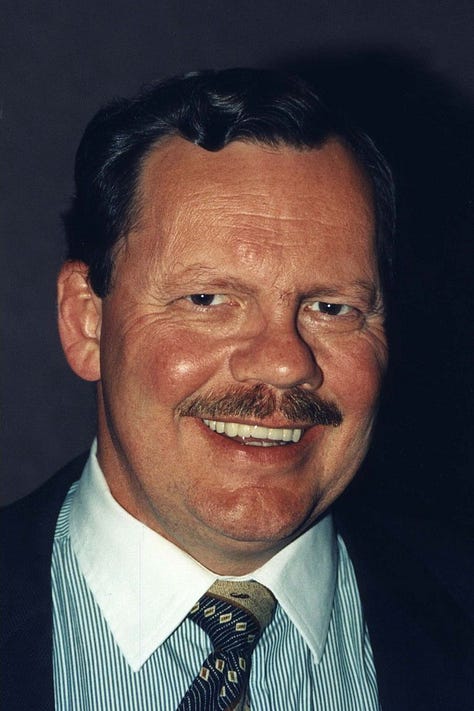
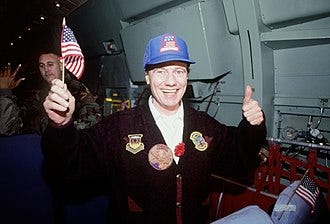
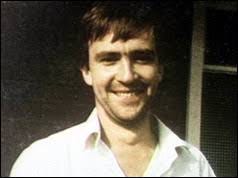
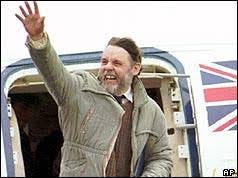
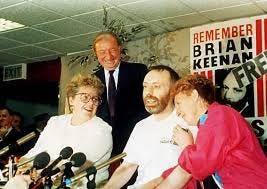
In the spring of 1985, Hezbollah released an open letter to "The Downtrodden in Lebanon and in the World", which stated that the world was divided between the oppressed and the oppressors. The oppressors were named as the United States and Israel. This letter legitimized and praised the use of violence against the Western enemies of Islam. Hezbollah continued fighting Israel in Lebanon, using hit-and-run guerrilla attacks, suicide bombings, and Katyusha rocket attacks on civilian targets in Northern Israel, including Kiryat Shmona. The Katyusha proved to be an effective weapon and became a mainstay of Hezbollah military capabilities in southern Lebanon.
In June 1985, Israel had withdrew all of their troops from the majority of Lebanon and returned control to the Lebanese Army. However, the IDF and their Lebanese allies the South Lebanese Army (SLA) maintained control over a 350 square mile area along the Israel-Lebanon border in order to create a buffer between northern Israel and Hezbollah and other terrorist forces further inside Lebanon.
The Lebanese Civil War officially came to an end with the Ta’if Accord in 1989. As part of the agreement all militias were required to disarm, but Hezbollah's leader, al-Musawi announced that until Israel completely leaves Lebanon “Our guns are a red line that cannot be crossed”. A disputed area where the borders of Lebanon, Syria and Israel meet called Shebaa Farms, was the catalyst for Hezbollah to keep their arms. The territory is currently disputed as either Lebanese territory or Syrian territory occupied by Israel. This issue was because of the failure of the French Mandate administration and later the Lebanese and Syrian governments, to demarcate the border between Lebanon and Syria. In the 1920s and 1930s documents indicate that Shebaa Farms inhabitants paid taxes to the Lebanese government. However, from the early ‘50s to Israel’s occupation of the Golan Heights during the Six-Day War, Syria was the de facto ruling power. In 1981 after the Israeli invasion of Lebanon, the Golan Heights, including the Shebaa Farms, were annexed by Israel, a move only recognized by the United States.
There continued to be low-level, tit for tat attacks by Israel and Hezbollah in 1990 and 1991, but it February of 1992, things got a little hotter. On February 14, Hezbollah infiltrated an IDF base in the Security Zone and killed three soldiers. Two days later the Israelis responded by assassinating Abbas al-Musawi, along with his wife, son and four others, when an Israeli AH-64 Apache gunship fired three missiles at his motorcade. Hezbollah responded with rocket fire into the Israeli security zone, and in response Israel sent two armored columns to hit Hezbollah strongholds in Kafra and Yater, north of the Security Zone. Musawi was succeeded by Hassan Nasrallah, one of his first public declarations was the "retribution" policy, which stated that if Israel hit Lebanese civilian targets, then Hezbollah would retaliate with attacks on Israeli territory.
Hostilities flared again in July of 1993, after a month of Hezbollah shelling of Israeli towns and attacks on Israeli military positions, Israel conducted a seven-day operation called Operation Accountability. One Israeli soldier and 50 Hezbollah fighters were killed in the operation, along with 2 Israeli and 118 Lebanese civilians. After one week of fighting Israel and Hezbollah reached an agreement mediated by the United States which prohibited attacks on civilian targets by both parties.
In June 1994, an Israeli airstrike against a Hezbollah training camp killed 35 trainees. Hezbollah retaliated by firing four barrages of Katyusha rockets into northern Israel, wounding 12 Israelis. In March 1995, Rida Yasin, also known as Abu Ali, a senior Hezbollah commander in southern Lebanon, was killed by a single rocket fired from an Israeli helicopter near Tyre inside the Security Zone. One Israeli civilian was killed and fifteen wounded in the retaliatory rocket fire. In May 1995, four Hezbollah fighters were killed in a firefight with Israeli troops while trying to infiltrate an Israeli position in the Security Zone.
Operation Grapes of Wrath
In April 1996, after 639 rocket attacks by Hezbollah against towns in northern Israel, most targeting Kiryat Shemona, Israel launched Operation Grapes of Wrath, a seventeen-day campaign in an attempt to end the rocket attacks. Israel conducted more than 1,100 air raids and extensive shelling. The declared objective of these attacks was to cause a general flight of the civilian population towards the Beirut area. The humanitarian crisis was intended to put pressure on the Lebanese and Syrian governments to disarm Hezbollah. On April 11, Israel issued warnings, dropped leaflets and broadcast more warnings through the radio station of the SLA, to the inhabitants of 44 (later extended to 88) south Lebanese villages to evacuate their homes before 2:30 pm the following day, the attacks on the villages started 4:30 pm. Israel blockaded the ports of Beirut, Sidon and Tyre. In the early morning of April 14, the electrical transformer station at Bsalim was destroyed in an air strike and the next day Lebanon's largest transformer station at Jumhour, five miles east of Beirut, was also destroyed, leaving Beirut without electricity. The following day the perimeter of Beirut Airport was bombed.
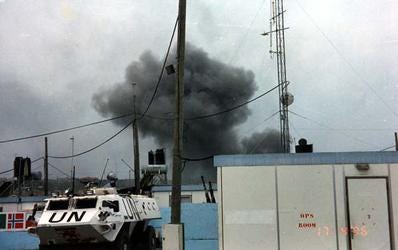
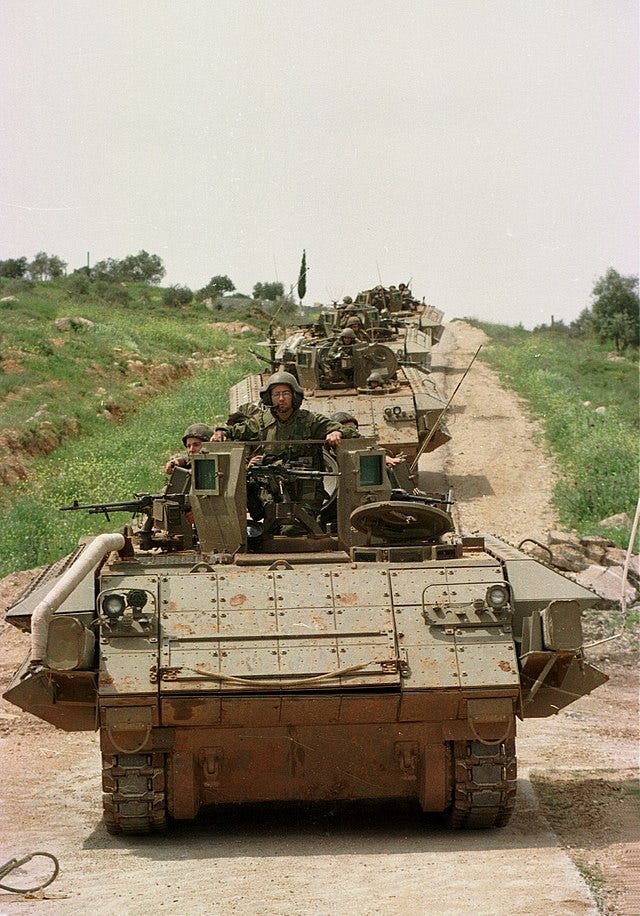
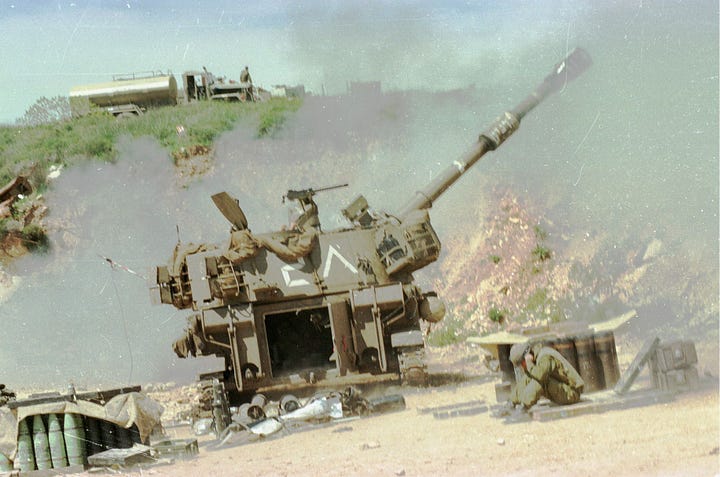
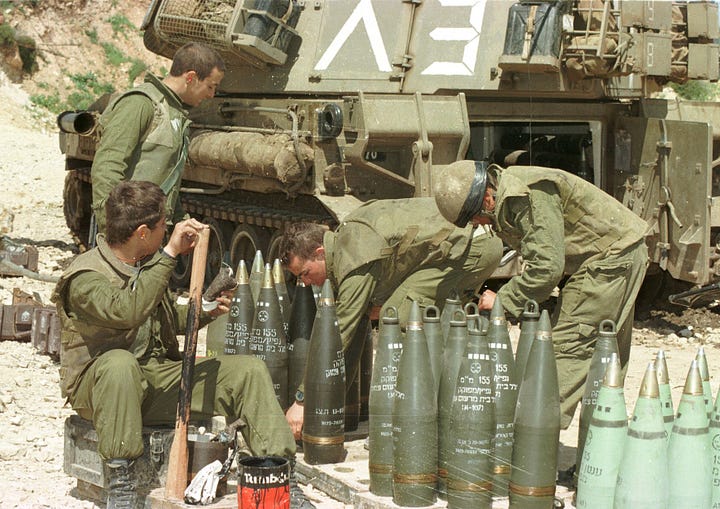
On April 18, Israeli forces in Lebanon were fired upon by Hezbollah fighters near a United Nations Interim Force in Lebanon (UNIFIL) base at Qana where over 800 Lebanese civilians had taken refuge from the fighting. This had been a UN headquarters for 18 years, it was well-marked on Israeli maps, and was adorned with large white and black UN signs. Between noon and 1:00 pm the Hezbollah militants fired eight rockets and eight 120mm mortars at IDF troops in the area. The firing positions were between 200 and 600 yards from the UN base. The Israelis responded with 36 rounds of artillery fire, all of which missed the area where Hezbollah had fired from. The compound was hit by 13 shells, killing 106 civilians and wounding 234 more. The Qana massacre resulted in a wave of international condemnation. As a result of the intense diplomatic pressure that followed, Israel ended Operation Grapes of Wrath before it had originally planned to. On April 26, 1996, after US brokered talks, the two sides announced the Israeli-Lebanese Ceasefire Understanding, an informal written agreement, which became effective at 4:00 am on April 27. The agreement barred cross-border attacks on civilian targets, as well as using civilian villages to launch attacks. The Monitoring Committee for the Implementation of the Grapes of Wrath Understandings was set up, comprising representatives from the U.S., France, Syria, Israel and Lebanon to monitor and address any violations of the understanding. There were no IDF soldiers killed during the operation, 64 Israeli civilians were wounded and 16,000 were displaced. 13 Hezbollah fighters were killed, 52 wounded and 34 captured. There were also 200 Lebanese civilians killed, 340 wounded and 400,000 displaced.
May 1996 to 2006
Between the end of Operation Grapes of Wrath and the election of Ehud Barak as Israeli Prime Minister in 1996, the situation in southern Lebanon and northern Israel settled down to periodic clashes between the IDF and Hezbollah forces killing 45 IDF soldiers, 10 Israeli civilians, 29 Lebanese civilians and 90 Hezbollah militants.
In July 1999, Ehud Barak became Israel's Prime Minister, promising Israel would unilaterally withdraw to the international border by July 2000. Prior to his actions, many believed that Israel would only withdraw from South Lebanon upon reaching an agreement with Syria.
During the spring of 2000, Hezbollah stepped up persistent harassment of Israeli military outposts in the Security Zone. As preparation for the withdrawal plan advanced, Israeli forces began abandoning positions at the northern edge of the Security Zone. On May 24, Israel announced that it would withdraw all troops from South Lebanon and by the end of the next day all IDF forces had withdrawn from Lebanon, more than six weeks before its stated deadline of July 7, 2000. The Israeli pullout resulted in the collapse of the SLA and the rapid advance of Hezbollah forces into the area. As the IDF withdrew, thousands of Shi'a Lebanese rushed back to the South to reclaim their property. This withdrawal was widely considered a victory for Hezbollah and boosted its popularity in Lebanon.
The withdrawal is still disputed however, as Lebanese government and Hezbollah claim that Shebaa Farms is Lebanese territory. Because the Syrian-backed Lebanese government refused to demarcate its border with Israel, Israel worked with UN cartographers led by regional coordinator Terje Rod-Larsen to certify Israel had withdrawn from all occupied Lebanese territory. On June 16, 2000, the UN Security Council concluded that Israel had indeed withdrawn its forces from all of Lebanon, in accordance with UN Security Council Resolution 425 issued in 1978.
Israel considered this move as tactical withdrawal since it always regarded the Security Zone as a buffer to protect Israel's citizens. By ending the occupation, Barak's cabinet assumed it would improve its worldwide image. Barak argued that "Hezbollah would have enjoyed international legitimacy in their struggle against a foreign occupier", if the Israelis had not unilaterally withdrawn without a peace agreement. Hezbollah and the wider Middle East saw the withdrawal as a clear victory for Hezbollah.
The tentative peace, resulting from the withdrawal, did not last. On October, 7, 2000, Hezbollah conducted a cross-border raid, abducting three Israeli soldiers. This escalated into a two-month long exchange of fire between Israel and Hezbollah, primarily at the Hermon ridge. The bodies of the abducted soldiers were returned to Israel in a January 2004 prisoner exchange involving 450 Lebanese prisoners held in Israeli jails.
The 2006 Lebanon War
This conflict was precipitated by a July 12, 2006, cross-border raid by Hezbollah. Hezbollah fighters fired rockets at Israeli border towns as a diversion for an anti-tank missile attack on two IDF Humvees patrolling the Israeli side of the border fence. The ambush left three soldiers dead, two wounded and two more Israeli soldiers who were captured and taken to Lebanon.
The Hannibal Directive is an IDF order stating that the abduction of Israeli soldiers must be prevented by all means, including shooting at or shelling a get-away car and risking the lives of the captives. The Hannibal Directive was invoked in this case, triggering instant aerial surveillance and airstrikes inside Lebanon to limit Hezbollah's ability to move the soldiers it had seized. Lieutenant Colonel Ishai Efroni, deputy commander of the Baram Brigade, sent a Merkava Mark II tank an M-113 armored personnel carrier and a helicopter in pursuit of the kidnappers. Crossing into Lebanon, they headed down a dirt track lined with Lebanese border defenses. However, they veered onto a road near a known Hezbollah outpost along the border. The tank was destroyed by an IED, killing the four man crew. Another soldier was killed and two were lightly wounded by mortar fire as they attempted to recover the bodies.
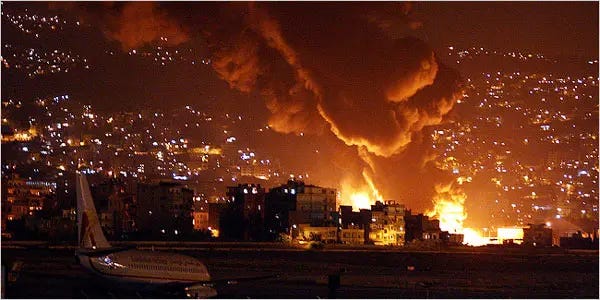
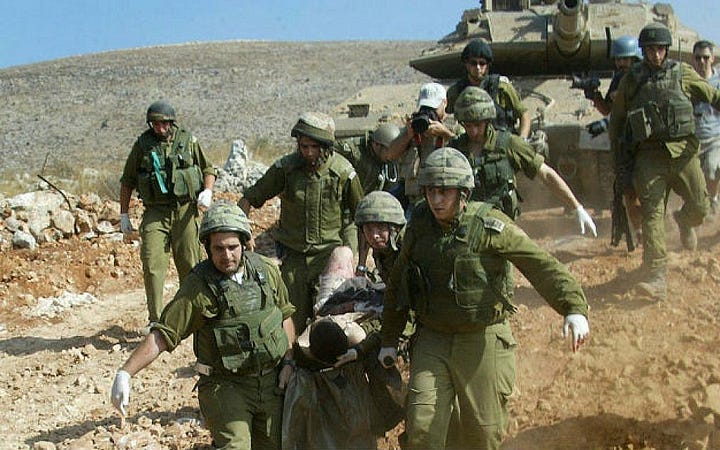
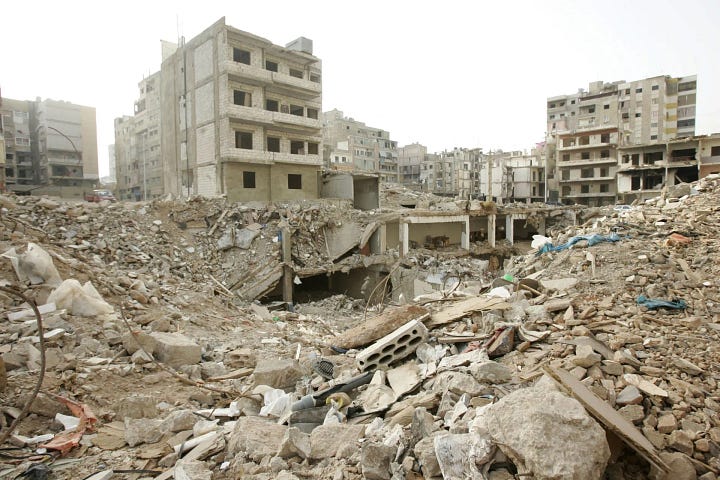
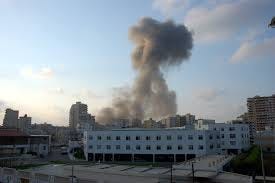
Hezbollah demanded the release of Lebanese prisoners held by Israel in exchange for the release of the abducted soldiers. Israel refused and responded with airstrikes and artillery fire on targets in Lebanon, imposed an air and naval blockade and finally launched a ground invasion. Israel attacked both Hezbollah military targets and Lebanese civilian infrastructure, including Beirut’s Rafic Hariri International Airport. In response Hezbollah launched rockets into northern Israel.
On August 11, 2006, in an effort to end the hostilities, the UN Security Council unanimously approved UNSCR 1701. The resolution, which was approved by both the Lebanese and Israeli governments in the following days, called for disarmament of Hezbollah, the withdrawal of the IDF from Lebanon, and for the deployment of the Lebanese Armed Forces and an enlarged UNIFIL force in the south. UNIFIL was given an expanded mandate, including the ability to use force to ensure that their area of operations was not used for hostile activities, and the creation of an area between the “Blue Line”, the Israel-Lebanon border, and the Litani River. This area was to be free of any armed personnel, assets, and weapons except for those of the government of Lebanon and UNIFIL. The Lebanese Army began deploying in Southern Lebanon on August 17, the blockade was lifted on September 8, and by October 1, the majority of Israeli troops withdrew from Lebanon, although the last of the troops continued to occupy the border-straddling village of Ghajar. Since the enactment of UNSCR 1701 both the Lebanese government and UNIFIL have stated that they will not disarm Hezbollah. The remains of the two captured soldiers, who died at the scene of the ambush, were returned to Israel on July 16, 2008 as part of a prisoner exchange.
The conflict killed 121 IDF troops and wounded another 1,244. 46 Israeli civilians were killed and 1,384 wounded. 674 Hezbollah fighters were killed and 800 wounded. 1,191 Lebanese civilians were killed and 4,409 were wounded. The war severely damaged Lebanese civil infrastructure, and displaced approximately one million Lebanese and 400,000 Israelis.
The Situation Since 2006
While Hezbollah has been a fixture of the Lebanese government since 1992, when eight of its members were elected to Parliament, and have held cabinet positions since 2005, the 2006 War was a paradigm shift for the organization. Their victory emboldened them to stand up to Israel and to become the decision-makers about war and peace in Lebanon. They cast off the political cover provided by the Lebanese government and believe that they have earned the right to make decisions of their own, regardless of what the government wants or says. 2006 was the first time Hezbollah mobilized their forces without seeking approval from the Lebanese government. Over the past 17 years, Hezbollah has also become a key political player in Lebanon, especially following its alliance with the Christian Free Patriotic Movement Party, whose leader, General Michel Aoun, was the country’s president from 2016 until 2022. While their rhetoric still revolves around the narrative that they are a resistance group, their anti-establishment rhetoric has waned. In 2009 Hezbollah issued an updated manifesto that was less Islamist than its predecessor and called for “true democracy.” The most recent national elections, in 2022, saw Hezbollah maintain its 13 seats in Lebanon’s 128-member Parliament, though the party and its allies lost their majority. Hezbollah also manages a vast network of social services that include infrastructure, health-care facilities, schools, and youth programs, all of which have been instrumental in garnering support for Hezbollah from Shiite and non-Shiite Lebanese alike.
Hezbollah’s more independent mindset has continued, most notably in 2012 when Hezbollah took the unilateral decision to intervene militarily to back the Syrian government in the civil war there. Since its expansion into regional military activity, Hezbollah’s numbers have grown and they have diversified its military tactics and arsenal, most notably through its collaboration with the Russian and Syrian armies. It has however lost more than 1,700 fighters in Syria over the past 13 years, and in recent years Israel has launched air attacks on Hezbollah convoys in Syria.
While tensions between Hezbollah and Israel have intermittently flared at the southern Lebanese border over the past 17 years, the situation had largely remained calm in Lebanon. At least until the October 7, 2023 Hamas massacre.
Next week, in Part II I will look at the Hezbollah response to the Hamas attacks the Israeli reaction, and what it might mean it terms of a larger war in the Middle East. I hope you enjoy my posts and please pass them along to anyone who would be interested.
Chris




